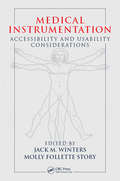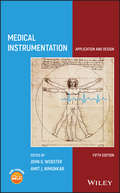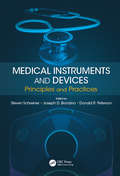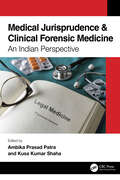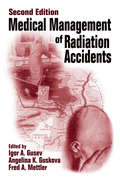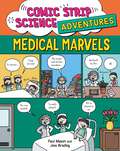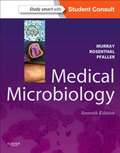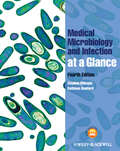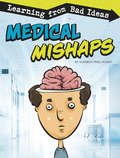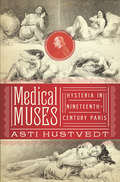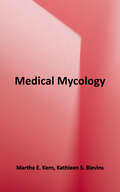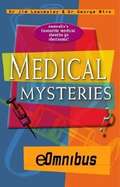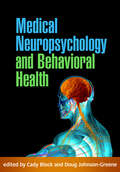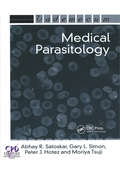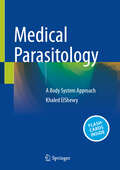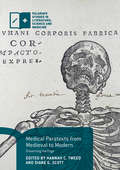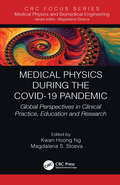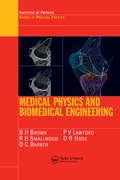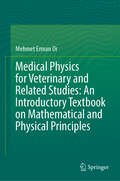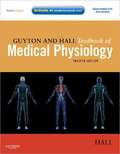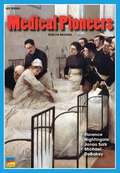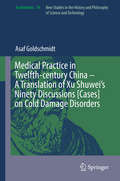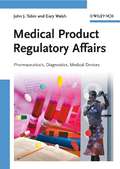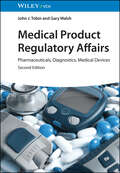- Table View
- List View
Medical Instrumentation: Accessibility and Usability Considerations
by Jack M. Winters Molly Follette StoryTwo of the most important yet often overlooked aspects of a medical device are its usability and accessibility. This is important not only for health care providers, but also for older patients and users with disabilities or activity limitations. Medical Instrumentation: Accessibility and Usability Considerations focuses on how lack of usabi
Medical Instrumentation: Application and Design
by John G. Webster Amit J. NimunkarProvides a comprehensive overview of the basic concepts behind the application and designs of medical instrumentation This premiere reference on medical instrumentation describes the principles, applications, and design of the medical instrumentation most commonly used in hospitals. It places great emphasis on design principles so that scientists with limited background in electronics can gain enough information to design instruments that may not be commercially available. The revised edition includes new material on microcontroller-based medical instrumentation with relevant code, device design with circuit simulations and implementations, dry electrodes for electrocardiography, sleep apnea monitor, Infusion pump system, medical imaging techniques and electrical safety. Each chapter includes new problems and updated reference material that covers the latest medical technologies. Medical Instrumentation: Application and Design, Fifth Edition covers general concepts that are applicable to all instrumentation systems, including the static and dynamic characteristics of a system, the engineering design process, the commercial development and regulatory classifications, and the electrical safety, protection, codes and standards for medical devices. The readers learn about the principles behind various sensor mechanisms, the necessary amplifier and filter designs for analog signal processing, and the digital data acquisition, processing, storage and display using microcontrollers. The measurements of both cardiovascular dynamics and respiratory dynamics are discussed, as is the developing field of biosensors. The book also covers general concepts of clinical laboratory instrumentation, medical imaging, various therapeutic and prosthetic devices, and more. Emphasizes design throughout so scientists and engineers can create medical instruments Updates the coverage of modern sensor signal processing New material added to the chapter on modern microcontroller use Features revised chapters, descriptions, and references throughout Includes many new worked out examples and supports student problem-solving Offers updated, new, and expanded materials on a companion webpage Supplemented with a solutions manual containing complete solutions to all problems Medical Instrumentation: Application and Design, Fifth Edition is an excellent book for a senior to graduate-level course in biomedical engineering and will benefit other health professionals involved with the topic.
Medical Instruments and Devices: Principles and Practices
by Joseph D. Bronzino Donald R. Peterson Steven SchreinerMedical Instruments and Devices: Principles and Practices originates from the medical instruments and devices section of The Biomedical Engineering Handbook, Fourth Edition. Top experts in the field provide material that spans this wide field. The text examines how biopotential amplifiers help regulate the quality and content of measured signals. I
Medical Jurisprudence & Clinical Forensic Medicine: An Indian Perspective
by Mba Frcp Md Dr Ambika Prasad Patra And Dr Kusa Kumar Shaha Ffflm Professor (additional) & Head of Department Faculty Of Medicine Department of Forensic Medicine & Toxicology Jawaharlal Institute of Post-graduate Medical Education & Research India; Member of International Academy of Legal Medicine of Switzerland; Faculty member (by equivalent qualification) of Forensic & Legal Medicine of London; Member of Indian Academy of Forensic Medicine & Indian Society of Toxicology (ex-officio). Dr Kusa Kumar Shaha MbbsThis book on Medical Jurisprudence & Clinical Forensic Medicine addresses the evolving nature of law and medicine. It updates the medicolegal (ML) systems and discusses the concerns related to digitalization of courts, serving a subpoena through social media, ethical/ML issues in nanomedicine, telemedicine and online prescription practices, toxicology and mass disaster. It fulfils the increased demands of students, forensic medicine specialists, clinicians and lawyers to get authentic medicolegal information in situations of ethical dilemma or during ML urgencies. It features case-based discussions on ML and deontological issues supported by the latest legal/statutory information. Key Features:• Discusses the clinical and applied aspects of forensic medicine through illustrative case scenarios and reports.• Addresses the needs of clinicians and forensic medicine specialists in writing medico-legal reports for specific cases.• Provides evidence-based solutions to medicolegal and ethical dilemma faced during routine practice.
Medical Management of Radiation Accidents
by Kenneth S. CohenAlthough radiation accidents are rare and often complex in nature, they are of great concern not only to the patient and involved medical staff, but to the media and public as well. Yet there are few if any comprehensive publications on the medical management of radiation accidents. Medical Management of Radiation Accidents provides a complete refe
Medical Marvels (Comic Strip Science Adventures #4)
by Paul MasonAn entertaining collection of comic strip stories uncovering some amazing advances in medicine.Discover how Charles Drew saved millions by storing blood plasma, how a Chinese scientist discovered a malaria treatment and much more. This book is sure to entertain children, while giving them an insight into the many challenges and rivalries behind scientific achievements and how scientists learn from mistakes. It is produced by the same team as Comic Strip Science with hilarious comic strips illustrated by award-winning artist Jess Bradley and written by Paul Mason, who is well known for making science learning fun. Key science concepts are pulled out in more depth in feature spreads. The book has a specialist text consultant Dr Anna Simmons, UCL.Comic Strip Science Adventures is a series of comic books that are perfect for young scientists aged 7 plus. Each book has specialist subject consultants. Titles in the series: Digging for Dinosaurs, Exploring Space, Medical Marvels, Amazing Inventions.
Medical Microbiology
by Patrick R. Murray Ken S. Rosenthal Michael A. PfallerThis book is written in a straightforward manner with, it is hoped, uncomplicated explanations of difficult concepts. Details are summarized in tabular format rather than in lengthy text, and there are colorful illustrations for the visual learner. Clinical Cases provide the relevance that puts reality into the basic science. Important points are emphasized in boxes to aid students, especially in their review; and the study questions, including Clinical Cases, address relevant aspects of each chapter. Each section begins with a chapter that summarizes microbial diseases, and this also provides review material. The authors used their experience also as teachers to choose the most important information and explanations for inclusion in this textbook. Each chapter has been carefully updated and expanded to include new, medically relevant discoveries. In each of these chapters, the authors have attempted to present the material that will help the student gain a clear understanding of the significance of the individual microbes and their diseases.
Medical Microbiology and Infection at a Glance
by Stephen Gillespie Kathleen BamfordThis concise and popular introduction to medical microbiology and infection encapsulates the fundamental facts and principles of this rapidly growing and changing subject area. Written by experienced clinicians and teachers, it covers the basic concepts of medical microbiology, and the main human pathogens and infectious syndromes, in an accessible and lucid format. This fully updated fourth edition is now supported by a companion website at www. ataglanceseries. com/medicalmicrobiology containing extra self-assessment cases, colour slides, further reading, and key point summaries. Medical Microbiology and Infection at a Glance is an invaluable revision aid for medical and allied health students and junior doctors, and is ideal for anyone seeking a comprehensive and concise guide to this subject area.
Medical Mishaps: Learning from Bad Ideas (Fantastic Fails)
by Elizabeth Pagel-HoganSee some of the world's most messed-up medical mishaps at a microscopic level. Find out how each procedure, tool, or surgery failed, the basic science that was missed, and what doctors learned from their mistakes.
Medical Muses: Hysteria in Nineteenth-Century Paris
by Asti HustvedtA fascinating study of three young female hysterics who shaped our early notions of psychology. Blanche, Augustine, and Genevieve found themselves in the hysteria ward of the Salpetriere Hospital in 1870s Paris, where their care was directed by the prominent neurologist Jean-Martin Charcot. They became medical celebrities: every week, eager crowds arrived at the hospital to observe their symptoms; they were photographed, sculpted, painted, and transformed into characters in novels. The remarkable story of their lives as patients in the clinic is a strange amalgam of intimate details and public exposure, science and religion, medicine and the occult, hypnotism, love, and theater. But who were Blanche, Augustine, and Genevieve? What role did they play in their own peculiar form of stardom? And what exactly were they suffering from? Hysteria--with its dramatic seizures, hallucinations, and reenactments of past traumas--may be an illness of the past, but the notions of femininity that lie behind it offer insights into disorders of the present.
Medical Mycology: A Self-instructional Text
by Martha E. Kern Kathleen S. Blevins- Each of the seven modules includes prerequisites, content outline, objectives, follow-up activities, references, and self-study examinations - Teaches proper laboratory practice and presents the biology and physiology of fungi, describing the epidemiology of fungal infections, defining fungal disease states, and emphasizing laboratory identification of fungi based on body sites - Test protocols and reagent recipes are highlighted in each module - Information about AIDS and immunocompromised patients has been added to the pertinent disease descriptions, following the discussion of causative organisms - Module 2 includes common techniques for fungal culture preservation, DNA testing for rapid identification, and antifungal therapeutics
Medical Mysteries eOmnibus
by Jim Leavesley George Biro3 books by 2 physicians who explore medical questions like what killed Jane Austin, did a mistake cause World War I, and did Freud use cocaine?
Medical Neuropsychology and Behavioral Health
by Cady Block Doug Johnson-GreeneIt is increasingly recognized that medical conditions can have a range of neurocognitive, psychosocial, and functional implications, even in the absence of obvious neurological involvement. Filling a gap in the literature, this comprehensive clinical reference reviews current research and provides clear guidelines for assessment and intervention. Chapters organized around major bodily systems--for example, cardiovascular, endocrine, immune/lymphatic--probe neurocognitive impairments associated with prevalent health conditions and their treatments, including coverage of COVID-19. State-of-the-science chapters on lifestyle behaviors and habits explore the neurocognitive impact of sleep and fatigue, nutrition and weight, acute and chronic pain (and the use of opioid analgesics), personality and temperament, and substance misuse.
Medical Parasitology
by Abhay R. Satoskar Gary L. Simon Peter J. Hotez Moriya TsujiInfections caused by parasites are still a major global health problem. Although parasitic infections are responsible for a significant morbidity and mortality in the developing countries, they are also prevalent in the developed countries. Early diagnosis and treatment of a parasitic infection is not only critical for preventing morbidity and mort
Medical Parasitology: A Body System Approach
by Khaled ElShewyThis book offers a concise and clear overview of medically important parasites. It sets itself apart from traditional parasitology systematic books by adopting an integrated modular system, which is currently being introduced in many countries. Parasites are categorized based on the body systems they infect. To avoid repetition, parasites with multisystem effects are grouped under the system they primarily infect, and they are cross-referenced in other relevant sections. The book thoroughly covers the various stages of a parasite's life cycle, modes of transmission, epidemiology, and diagnosis of parasitic diseases. To foster a better understanding of the connections between basic and clinical subjects, the text emphasizes the pathogenesis and subsequent clinical presentation of commonly encountered parasitic infections in humans. Moreover, the text includes current information on the ever-changing field of anti-parasitic treatment, serving as a valuable resource for practitioners. Each section is accompanied by endnotes that highlight key points, and review questions are provided to facilitate comprehension and review. The book's original drawings, tables, and colored diagrams are designed to simplify the understanding of pathogenesis and structural morphology. For those seeking additional details, structural morphology and dosages of anti-parasitic drugs are presented. The language is straightforward, making the book suitable for medical students and physicians alike, enabling them to approach more simplified literature with confidence. Additional questions and answers via app: Download the Springer Nature Flashcards app free of charge and use exclusive additional material to test your knowledge.
Medical Paratexts from Medieval to Modern: Dissecting The Page (Palgrave Studies in Literature, Science and Medicine)
by Hannah C. Tweed Diane G. ScottThis collection establishes the term ‘medical paratexts’ as a useful addition to medical humanities, book history, and literary studies research. As a relatively new field of study, little critical attention has been paid to medical paratexts. We understand paratext as the apparatus of graphic communication: title pages, prefaces, illustrations, marginalia, and publishing details which act as mediators between text and reader. Discussing the development of medical paratexts across scribal, print and digital media, the collection spans the medieval period to the twenty-first century. Dissecting the Page is structured in two thematic sections, underpinned by a shared examination of ideas of medical and lay readership and a history of reader response. The first section focuses on the production, reception, and use of medical texts. The second section analyses the role and significance of authority, access, and dissemination in discussions of health, medicine, and illness, for both lay and medical readerships.
Medical Physics During the COVID-19 Pandemic: Global Perspectives in Clinical Practice, Education and Research (Focus Series in Medical Physics and Biomedical Engineering)
by Kwan Hoong Ng; Magdalena S. StoevaSpreading to every corner of the Earth, the COVID-19 virus has had an unparalleled impact on all aspects of our lives. This book explores in detail how the COVID-19 pandemic has affected clinical practice, education, and research in medical physics, and how colleagues on the frontline dealt with this unpredictable and unprecedented pandemic. It tackles key questions such as: How did medical physicists first respond to the situation? What innovative strategies were taken and how effective were they? How are medical physicists preparing for the future? There will be a focus on the different experiences of regional medical physicists and the responses and outlooks in clinical practice, education, and research in the affected continents, Asia-Pacific, the Middle East, Europe, Africa and North and Latin America. With over 91 contributors from 39 countries, this unique resource contains key perspectives from teams from each territory to ensure a global range of accounts. The collective opinion and wisdom from the major medical physics journal editors-in-chief are also explored, alongside how the pandemic has affected the quantity and quality of publications. Voices of early-career researchers and students of medical physics will be included, with narratives of their experiences coping with life during the pandemic. Lastly, communicating leadership in times of adversity is highlighted. This book will be a historic account of the impact of the COVID-19 virus on the field of medical physics. It will be an ideal reference for medical physicists, medical physics trainees and students, hospital administrators, regulators, and healthcare professionals allied with medical physics. Key features: The first book to cover the impact of COVID-19 on the field of medical physics Edited by two experts in the field, with chapter contributions from subject area specialists around the world Broad, global coverage, ranging from the impact on teaching, research, and publishing, with unique perspectives from journal editors and students and trainees
Medical Physics and Biomedical Engineering (Series in Medical Physics and Biomedical Engineering)
by B. H Brown R. H Smallwood D. C. Barber P. V Lawford D. R Hose<p>Medical Physics and Biomedical Engineering provides broad coverage appropriate for senior undergraduates and graduates in medical physics and biomedical engineering. Divided into two parts, the first part presents the underlying physics, electronics, anatomy, and physiology and the second part addresses practical applications. The structured approach means that later chapters build and broaden the material introduced in the opening chapters; for example, students can read chapters covering the introductory science of an area and then study the practical application of the topic. <p>Coverage includes biomechanics; ionizing and nonionizing radiation and measurements; image formation techniques, processing, and analysis; safety issues; biomedical devices; mathematical and statistical techniques; physiological signals and responses; and respiratory and cardiovascular function and measurement. Where necessary, the authors provide references to the mathematical background and keep detailed derivations to a minimum. They give comprehensive references to junior undergraduate texts in physics, electronics, and life sciences in the bibliographies at the end of each chapter.</p>
Medical Physics for Veterinary and Related Studies: An Introductory Textbook on Mathematical and Physical Principles
by Mehmet Erman OrThis helpful textbook enlightens veterinary students and practicing experts to understand and make use of the basic knowledge and methods in the fields of physical and mathematical veterinary medicine. It prepares undergraduates and learners for their clinical courses. Moreover, to fully cover the topics in focus and maintain integrity of significant subjects, non-veterinary sections with broader relevance are additionally included. The author provides sound definitions and formulas for general mathematics, including proportions, cartesian space (curves and lines), trigonometry, derivation/integration and more. Throughout the book, readers will further benefit from medical and biological examples to connect to real-life applications. Relevant imaging techniques and thermoregulation are covered. Complementary comments linked to the history of science complete the work. Finally, targeted questions help you test the knowledge you have learned for the different topics. In summary, this rich resource contributes to a well-rounded scientific education for current and future veterinarians and students of related disciplines in (bio)medicine, biology and the life sciences.
Medical Physiology
by Walter Boron Emile BoulpaepMedical Physiology, in its updated 2nd edition, firmly relates molecular and cellular biology to the study of human physiology and disease. Drs. Walter Boron and Emile Boulpaep and a team of leading physiologists present you with practical, accurate coverage, continually emphasizing the clinical implications of the material. Each chapter explains the principles and organization of each body system, while more than 1400 high-quality, full-color line drawings and prominently featured clinical examples clarify every concept. This exceptionally detailed and comprehensive guide to physiology is ideal for a rich, straightforward, state-of-the-art understanding of this essential subject. Quickly review important content using prominent boxes included throughout the text to provide clinical examples of disordered physiology. Master difficult concepts with the use of 800 color drawings that feature balloon captions explaining key processes. Find information easily with the intuitive organization by body system and consistent style. Get up-to-date coverage of physiology with updated text and figures. Access the fully searchable text online at www. StudentConsult. com, along with Webnotes, Image Bank, 150 Self-assessment questions, and 10 physiology animations. Stay current thanks to updated material, including a new chapter on Physiology of Aging and a new section on hemostasis. Gain a clear visual understanding with a revised and updated art program of high-quality, full color line drawings and prominently featured clinical examples.
Medical Physiology: With Student Consult Online Access (12th Edition)
by John E. Hall Arthur C. GuytonThe 12th edition of Guyton and Hall Textbook of Medical Physiology continues this bestselling title's long tradition as one of the world's favorite physiology textbooks. The immense success of this book is due to its description of complex physiologic principles in language that is easy to read and understand. Now with an improved color art program, thorough updates reflecting today's medicine and science, and accessible online at studentconsult.com, this textbook is an excellent source for mastering essential human physiology knowledge. Learn and remember vital concepts easily thanks to short, easy-to-read, masterfully edited chapters and a user-friendly full-color design. See core concepts applied to real-life situations with clinical vignettes throughout the text. Discover the newest in physiology with updates that reflect the latest advances in molecular biology, cardiovascular, neurophysiology and gastrointestinal topics. Visualize physiologic principles clearly with over 1000 bold, full-color drawings and diagrams. Distinguish core concepts from more in-depth material with a layout that uses gray shading to clearly differentiate between "need-to-know" and "nice-to-know" information. Access the complete contents online at studentconsult.com along with bonus resources such as image banks, self-assessment questions, physiology animations and more! This new edition continues the long tradition of "Guyton" as one of the world's favorite physiology textbooks.
Medical Pioneers
by Alison Adams Evelyn BrooksFind out about great men and women like Florence Nightingale, Jonas Salk, and Michael Debakey who made great advances in the field of medicine.
Medical Practice in Twelfth-century China – A Translation of Xu Shuwei’s Ninety Discussions [Cases] on Cold Damage Disorders (Archimedes #54)
by Asaf GoldschmidtThis book is an annotated translation of Xu Shuwei’s (1080–1154) collection of 90 medical case records – Ninety Discussions of Cold Damage Disorders (shanghan jiushi lun 傷寒九十論) – which was the first such collection in China. The translation reveals patterns of social as well as medical history. This book provides the readers with a distinctive first hand perspective on twelfth-century medical practice, including medical aspects, such as nosology, diagnosis, treatment, and doctrinal reasoning supporting them. It also presents the social aspect of medical practice, detailing the various participants in the medical encounter, their role, the power relations within the encounter, and the location where the encounter occurred. Reading the translation of Xu’s cases allows the readers high-resolution snapshots of medicine and medical practice as reflected from the case records documented by this leading twelfth-century physician. The detailed introduction to the translation contextualizes Xu’s life and medical practice in the broader changes of this transformative era.
Medical Product Regulatory Affairs: Pharmaceuticals, Diagnostics, Medical Devices
by Gary Walsh John J. TobinWritten in a clear and concise style by an experienced author, this attractively-priced book covers regulatory affairs in all major global markets for pharmaceuticals and medical devices, making it the most comprehensive in its field. Following a look at drug development, complete sections are devoted to national and EU regulatory issues, manufacturing license application and retention, and regulation in the USA. Other topics dealt with include CDER, CBER and marketing and manufacturing licenses, the ICH process and Good Laboratory/Clinical/Manufacturing Practices. Everything pharmacologists, bioengineers, pharma engineers, students in pharmacy and those working in the pharmaceutical industry need to know about medical regulatory affairs.
Medical Product Regulatory Affairs: Pharmaceuticals, Diagnostics, Medical Devices
by Gary Walsh John J. TobinMedical Product Regulatory Affairs Hands-on guide through the jungle of medical regulatory affairs for every professional involved in bringing new products to market Based on a module prepared by the authors for an MSc course offered by the University of Limerick, Ireland, Medical Product Regulatory Affairs is a comprehensive and practical guide on how pharmaceutical and medical devices are regulated within the major global markets. The Second Edition builds on the success of the first with an even wider scope and full coverage of new EU regulations on the safe use of medical devices. Following a look at drug development, complete sections are devoted to national and EU regulatory issues, manufacturing license application and retention, and regulation in the USA. Other topics dealt with include CDER, CBER and marketing and manufacturing licenses, the ICH process and Good Laboratory/Clinical/ Manufacturing Practices. Medical Product Regulatory Affairs includes information on: Aims and structure of regulation, covering purpose and principles of regulation, national and EU legislative processes, and pharmacopeia Regulatory strategy, covering product development and manufacturing, market vigilance, quality assurance systems, personnel, and documentation Drug discovery and development, covering prescription status, physical properties, therapeutic use, and drug discovery, development, and delivery Non-clinical studies, covering non-clinical study objectives and timing, pharmacological and pharmacodynamic studies, and bioavailability and bioequivalence Clinical trials, covering trial protocol, monitoring of trials, trial master files, and FDA communications The wide coverage of different product types and the main global markets makes Medical Product Regulatory Affairs ideal for training courses on regulatory affairs in academia and industry. It is also a valuable reference for pharmacologists, bioengineers, pharma engineers, and students in pharmacy to familiarize themselves with the topic.
